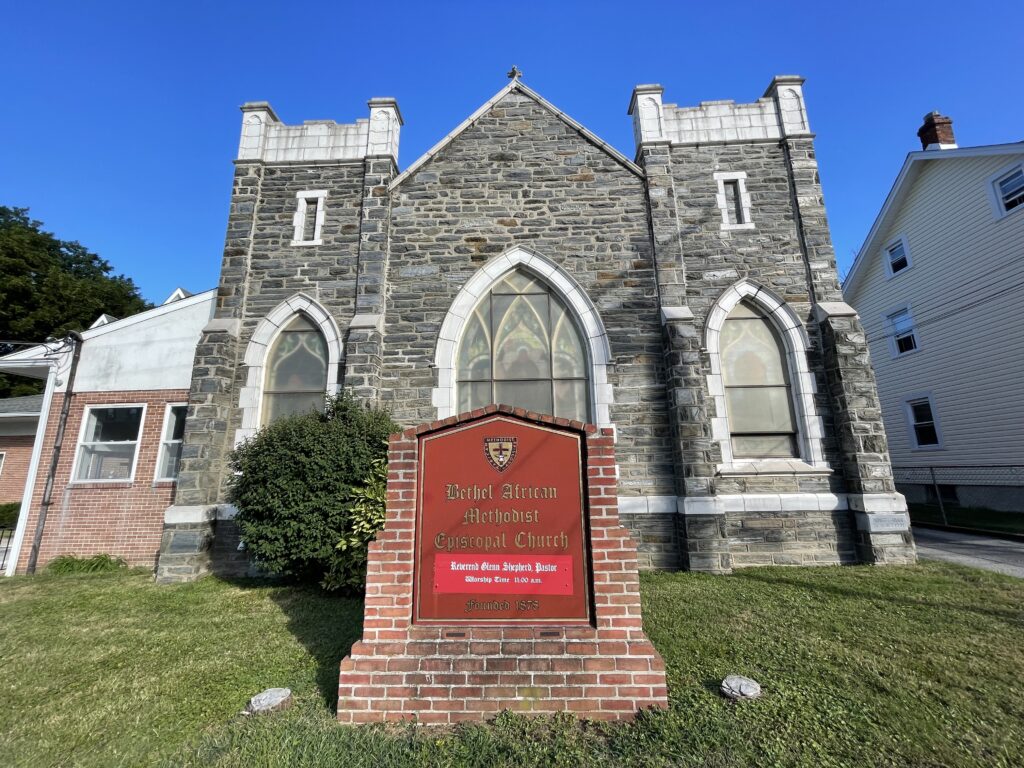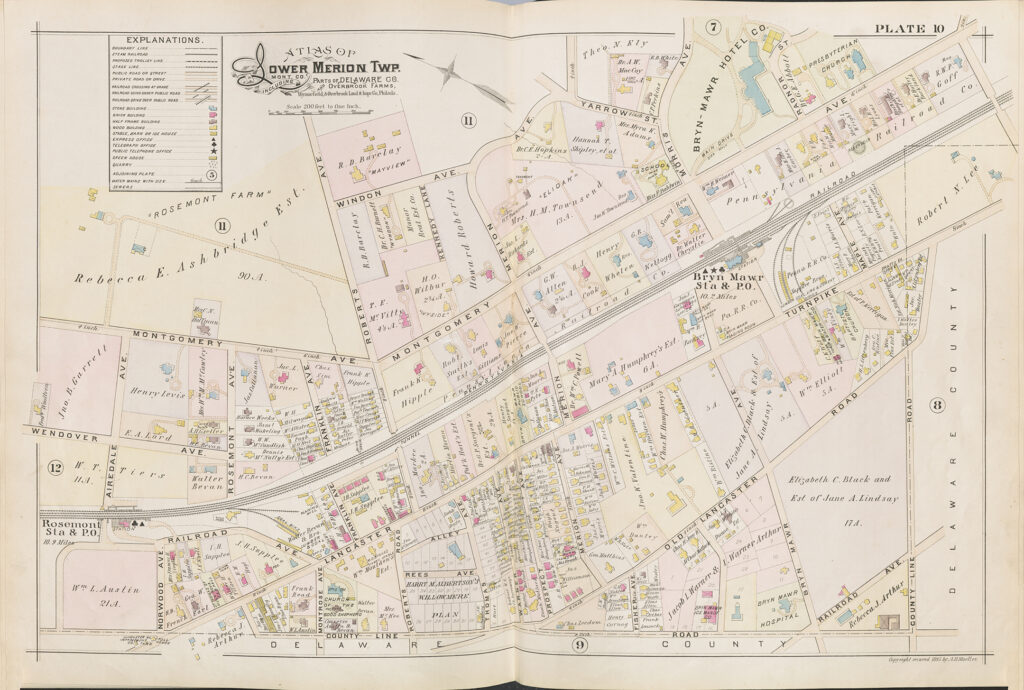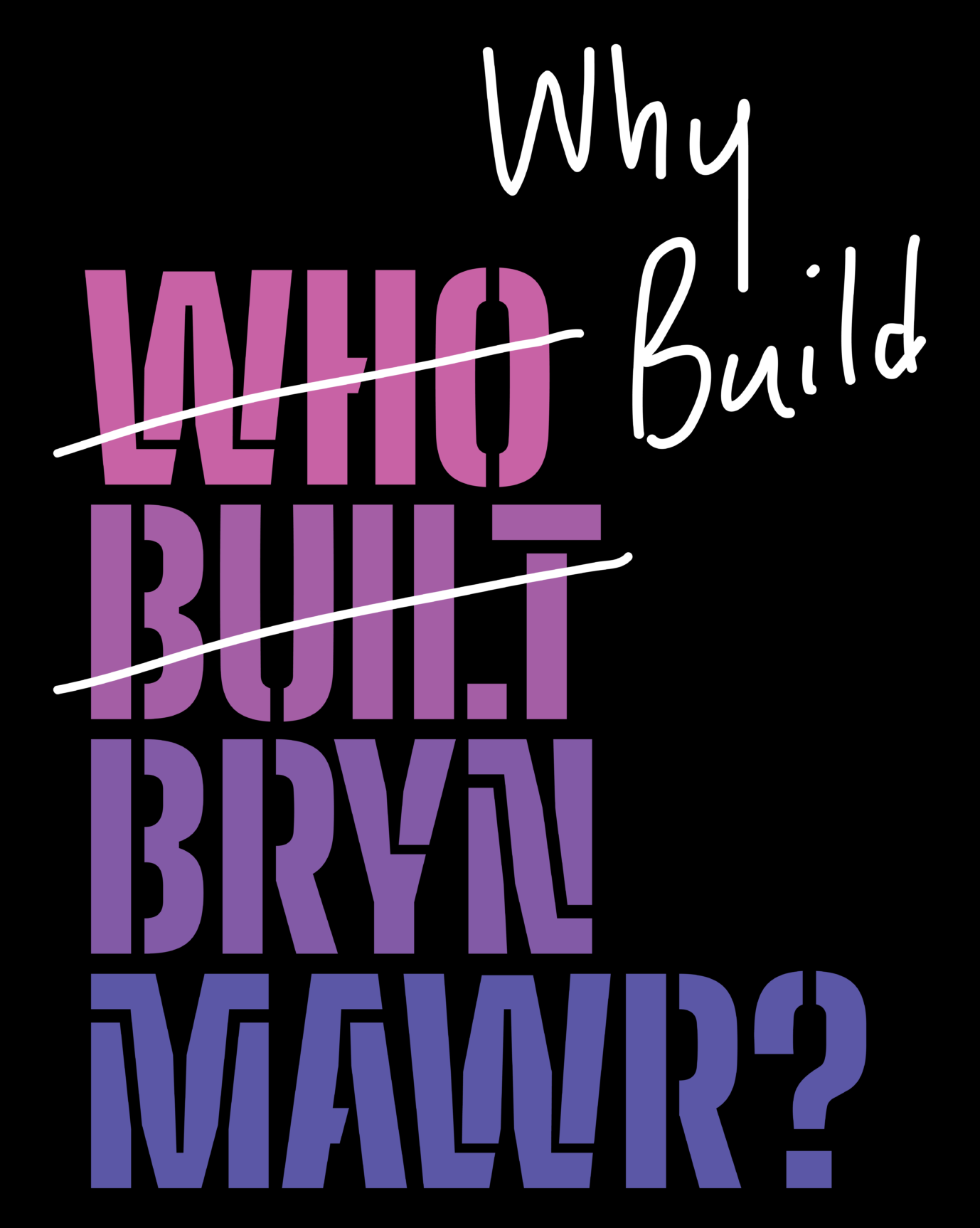Bryn Mawr’s founders were involved in various institutions dedicated to serving formerly enslaved and Indigenous peoples.
How would Bryn Mawr’s history and present be different if our founders had united their various projects from the beginning?
How might those unrealized pathways clarify new possibilities for our future?
Bethel AME Church
Tucked away on a modest side street off Lancaster Avenue, one-half mile from Bryn Mawr College, stands the Bethel AME Church, the oldest African American church on the Mainline. It was established by local Black residents John Hooper, George Barrett, and Samuel Curtis. Sermons delivered from this pulpit, like that of HCC Astwood in 1897, promoted Black pride and endurance in the face of inequity and white oppression.
Bryn Mawr Trustee John B. Garrett was one of several white neighbors who donated money to purchase the land for Bethel AME Church, despite opposition from other white residents. Garrett subsequently served as Treasurer of the Trustee Board, helping to steward the fledgling parish. Yet, there is no record of Garrett’s linking his philanthropic efforts at Bryn Mawr with those at Bethel AME Church.


John B. Garret’s large estate in Rosemont is noted on this map at the far left. The much smaller plot of land on which the Bethel AME Church stands is below. Bryn Mawr College is above.
How might the history of the College be different if he had? How might the collaboration of Barrett, Curtis, and Garrett have paved the way to a different Bryn Mawr?
“Already the African Methodist Church has begun its work. The Anglo-Saxon, greedy of gain, adventure and territorial robbery is absorbing, utilizing and civilizing those whom they would destroy, but bye and bye, through the agency of Allen’s Church [the AME Church] and Allen’s civilization, the Anglo-Saxon will be driven out and Africa will be redeemed for Christ and the race upon the governmental shoulders of the A.M.E. Church.”
Sermon delivered by Reverend HCC Astwood at the Bryn Mawr AME Church, February 14, 1897
It is possible that African American service staff of the College were members of this church? Were they among Astwood’s audience?

